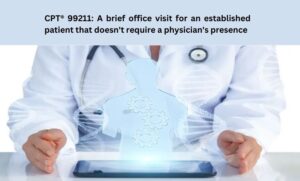Claim Adjustment Reason Codes (CARCs) play a vital role in the medical billing process, as they provide standardized communication between healthcare providers, payers, and medical billing companies regarding claim adjustments. Understanding and efficiently managing these codes are crucial for ensuring accurate reimbursement, minimizing claim denials, and maintaining a healthy revenue cycle. This comprehensive guide will delve into Claim Adjustment Reason Codes, exploring their significance, common usage, and strategies for managing them effectively.
Importance of Claim Adjustment Reason Codes
Claim Adjustment Reason Codes are essential because they clarify why adjustments are made to a claim. Whether the adjustment results in a reduction or increase in reimbursement, the associated code explains the rationale behind the change. This standardized communication helps healthcare providers and billing companies understand payer decisions, aiding in claim resolution and appeals.
Commonly Used Claim Adjustment Reason Codes
Let’s explore some of the most commonly used CARCs and their descriptions:
CARC 1: Deductible Amount
- Indicates that the claim amount has been adjusted to account for the patient’s deductible.
CARC 16: Claim/service lacks information or has submission errors
- Denotes that the claim is missing essential information or contains errors, leading to a denial.
CARC 29: The time limit for filing has expired
- Indicates that the claim was not paid because it was submitted after the payer’s specified time limit for claim submission.
CARC 45: Charge exceeds fee schedule/maximum allowable or contracted/legislated fee arrangement
- Indicates that the charged amount exceeds the maximum allowed or contracted fee for the service or procedure.
CARC 96: Non-covered charge(s). At least one Remark Code must be provided
- Denotes that the payer does not cover the charge, and a remark code must be provided for further explanation.
CARC 97: The benefit for this service is included in the payment/allowance for another service/procedure that has already been adjudicated
- Indicates that the claimed service is bundled or included in the payment for another already reimbursed service.
CARC 109: Claim not covered by this payer/contractor. You must send the claim to the correct payer/contractor
- Indicates that the claim was submitted to the wrong payer or contractor and needs to be resubmitted to the correct one.
CARC 197: Precertification/authorization/notification absent
- Denotes that the claim was denied because the required pre-authorization or notification was not obtained before the service was provided.
CARC 204: This service/equipment/drug is not covered under the patient’s current benefit plan
- Indicates that the claimed service, equipment, or drug is not covered under the patient’s insurance plan.
CARC 253: The attachment/other documentation is missing, incomplete, or invalid
- Denotes that the claim lacks the documentation or attachments needed for claim processing.
CARC 349: Payment denied because the patient has not met the required eligibility requirements
- Indicates that the patient’s coverage was inactive or eligible for the service provided.
CARC 452:Medicare claim has been forwarded to a private payer
- Indicates that the claim has been forwarded from Medicare to a secondary private payer for processing.
Other Claim Adjustment Reason Codes List
CARC 2: Coinsurance Amount
- Denotes that the claim amount has been adjusted to account for the patient’s coinsurance responsibility.
CARC 3: Co-payment Amount
- Indicates that the claim amount has been adjusted to account for the patient’s co-payment.
CARC 4: The procedure code is inconsistent with the modifier used, or a required modifier is missing
- Denotes that the procedure code submitted does not match the appropriate modifier or that a required modifier is missing
CARC 22: This care may be covered by another payer per the coordination of benefits
- Denotes that another payer may be responsible for covering the claimed service based on the coordination of benefits.
CARC 23: Payment adjusted due to the impact of prior payer(s) adjudication, including payments and/or adjustments
- Indicates that the claim’s payment was adjusted based on the payment or adjustments made by a prior payer.
CARC 32: Claim/service is inconsistent with the patient’s gender
- Denotes that the billed service is inconsistent with the gender recorded for the patient
CARC 66: Blood Deductible
- Indicates that the claim amount has been adjusted to account for the patient’s blood deductible.
CARC 100: Payment made to patient/insured/responsible party
- Indicates that the payment has been made directly to the patient or insured rather than the provider.
CARC 160: State-mandated (Medicare Crossover) or federal law/regulation related. The payer must send the claim to the next payer in the crossover sequence
- Indicates that the claim should be sent to the next payer in the Medicare crossover sequence as required by state law or federal regulations.
CARC 185: The time limit for adding a new baby has expired
- Denotes that the time limit for adding a newborn baby to the parent’s insurance policy has expired.
CARC 252: An attachment is required to adjudicate this claim or is required for the appeal
- Indicates that an attachment is necessary for proper claim adjudication or as part of the appeal process.
Also Read:
- Medical coding errors and how to prevent them
- Internal medicine CPT codes
- Importance of patient engagemnet in healthcare
Strategies for Efficiently Managing CARCs
To effectively manage Claim Adjustment Reason Codes and optimize the medical billing process, consider implementing the following strategies:
- Accurate Documentation: Ensure all claim-related documentation, including patient records, medical coding, and billing details, is accurate, complete, and up-to-date. Proper documentation serves as strong support during claim appeals.
- Automation and Technology: Utilize medical billing software and automation tools to streamline the denial and appeals process. Automated workflows can improve efficiency, reduce errors, and save time in managing denials.
- Root Cause Analysis: Conduct a thorough root cause analysis for significant or persistent denial issues. Addressing the underlying causes can lead to long-term improvements in claim acceptance rates.
- Educate Providers: Offer healthcare providers training sessions or educational resources to improve coding accuracy, compliance, and claim submission practices.
- Monitor Performance Metrics: Track key performance indicators (KPIs) related to denials and appeals, such as denial rate, appeal success rate, and average appeal resolution time. Use these metrics to identify areas for improvement and measure team performance.
- Effective Appeal Letters: Craft well-structured, persuasive appeal letters that clearly state the reasons for the appeal, along with supporting evidence and documentation.
Conclusion
Claim Adjustment Reason Codes are indispensable tools for effective medical billing. By understanding their significance and implementing best practices for managing them, healthcare providers and billing companies can navigate the complexities of claim adjustments efficiently. Regularly staying updated on industry changes and payer policies is essential to ensure accurate communication and maximize revenue for healthcare practices. With a comprehensive approach to Claim Adjustment Reason Codes, the healthcare industry can streamline the billing process and maintain a robust revenue cycle to benefit patients and providers alike.









